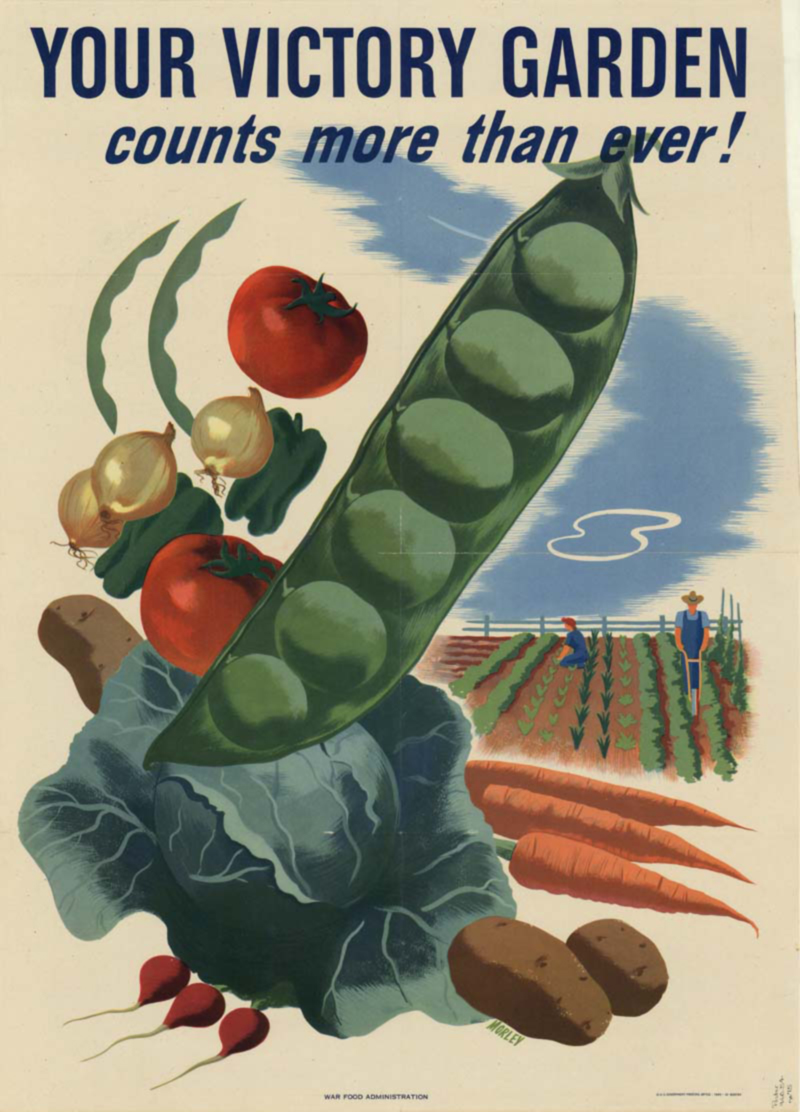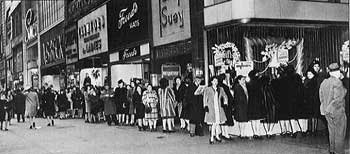
Image courtesy wilderspin.net.
Since today is Ash Wednesday, the start of Lent, I thought I would talk about wartime rationing in Britain during World War II. Before the war, Britain imported 55 million tons of food. However, due to the German subs attacking British ships, that total was reduced to 12 million. While Britain's rationing started in 1939, it continued in some form or another until 1954. Brits were expected to tighten their belts at the grocer. They were given ration books, buff-coloured for adults, green for pregnant/nursing women and preschoolers, and blue for children from 5 to 26 years of age. The average daily ration included:
- 1 egg
- 4 oz. margarine
- 4 oz. bacon
- 2 oz. batter
- 2 oz. tea
- 1 oz. cheese
- 8 oz. sugar
- meat (depending on the price)
Posters, leaflets and Food Flashes (for cinemagoers) encouraged Brits to grow victory gardens, not just to put food on their table but also to build morale. Wasting food became a criminal offence: everyone was expected to abide by the rationing regulations However, many individuals befriended their local butcher who might give them an extra piece of meat or the local baker who might give them an extra loaf of bread.

Image courtesy zazzle.ca.
The average Brit found his waistline narrowing due to the rationing; ironically, his health improved as a result. Fish and chips gave way to Woolton pie, a combination of mixed veggies, a sauce and a topping of either mashed potatoes or pastry. Roast beef was replaced by Poor Man's Goose, a combination of lentils and breadcrumbs. English Trifle took a back seat to a Prune Sponge, a dessert that did not require a lot of sugar or flour, given the wartime shortages.

Image courtesy www.warmuseum.ca.
The British people were also expected to ration clothing. Like with food, they were given ration booklets. A pair of shoes would cost a child 3 coupons while a nightshirt would cost 6 coupons. A boy could not wear trousers, or long pants, until he turned 12; in the meantime, he had to wear short pants. Women longed to get their hands on a pair of silk stockings (see my blog post "Shiny Stockings" dated May 15, 2012). The black market prospered as a result, goods being sold from suitcases on the street.

Nylon queue courtesy www.chm.bris.ac.uk.
Rationing also governed the supply of petroleum and coal during the Second World War. Many coal miners were called to serve on the battlefield thereby limiting the supply of coal. While the lower classes could not afford cars and therefore did not need petrol, the middle and upper classes missed the freedom of "pleasure motoring" which was restricted during the war. Also limited were the hours that one could drive due to the blackouts. Those who dared to venture out at night were often part of a fender-bender, or a collision with a pedestrian. The petrol shortages led to more people taking the bus or riding a bicycle.

Precious metals were also in short supply. Below a group of women do their part for the war effort.

RATIONING IN WARTIME & POST-WAR BRITAIN
ITEM
|
DATE STARTED
|
DATE ENDED
|
petrol
|
1939
|
May 1950
|
Bacon, butter, sugar
|
Jan. 1940
|
Feb. 1953
|
meat
|
Mar. 1940
|
July 1954
|
Tea, margarine
|
July 1940
|
Oct. 1952
|
jam
|
May 1941
|
May 1950
|
cheese
|
May 1941
|
May 1950
|
eggs
|
June 1941
|
Feb. 1953
|
Clothing
|
June 1941
|
May 1949
|
coal
|
July 1941
|
June 1958
|
Rice, dried fruit
|
Jan. 1942
|
May 1950
|
soap
|
Feb. 1942
|
Sept. 1950
|
Tinned tomatoes & peas
|
Feb. 1942
|
May 1950
|
electricity
|
Mar. 1942
|
?
|
Sweets & chocolates
|
July 1942
|
Feb. 1953
|
biscuits
|
Aug. 1942
|
May 1950
|
sausages
|
1943
|
July 1954
|
bread
|
1946
|
1948
|
No comments:
Post a Comment